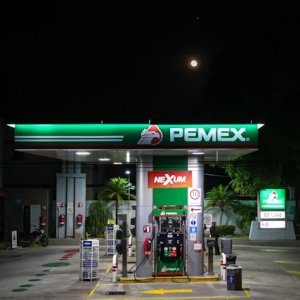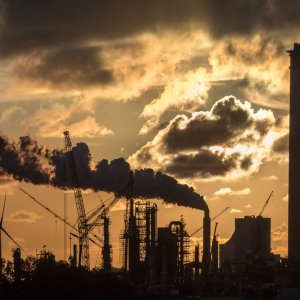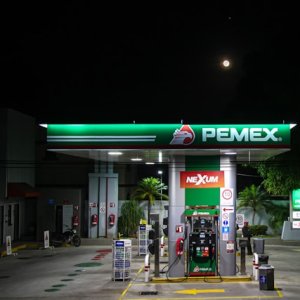Energy Sovereignty and Natural Gas in Mexico

To be able to talk about energy sovereignty, we need to start by defining sovereignty. This concept entails the authority of a country to govern itself. Then, the concept of energy sovereignty would cover the authority that Mexico has to govern itself on energy matters, and it embraces a series of dimensions among which we can include, accessibility, sustainability, resilience and self-sufficiency. Our country has been driving its energy policies in pursuit of energy sovereignty.
I want to concentrate on the concept of self-sufficiency, which contemplates energy availability, that is, physically present in our country, as well as the balance that needs to come from foreign countries to provide the total supply that is demanded by consumers in our energy sector. Specifically, I would like to concentrate on natural gas as the transition hydrocarbon of excellence based on our energy mix.
As we slowly move away from fossil fuels toward sustainable forms of energy (wind, solar, geothermal, among others) based on the commitments made by Mexico as part of international efforts to combat climate change and its effects on our planet, natural gas will play a pivotal role considering its greener status as compared to crude oil, fuel oil, coal, and other fuels with much deeper greenhouse effects on our environment. In addition to its greener status, it is way cheaper and quite abundant in huge untapped reserves within Mexico.
The main issue with natural gas is our significant dependance on its availability through imports from the US, which account for nearly 85% of our needs; roughly 15% of our supply is produced in Mexico, according to SENER. Natural gas is used primarily for power generation, and CFE is the main importer of natural gas for this purpose. But the manufacturing sector also accounts for a significant portion of its consumption, and in certain parts of the country, it is used for residential purposes as well as vehicular fuel.
One key element in the goal toward energy sovereignty relative to natural gas is that we have an abundance of reserves of this hydrocarbon right here in our country. The main issue is that, historically, extraction of natural gas has not been a top priority for our country, with the main emphasis being crude oil extraction. Yet, we are, literally, sitting on top of the same basin where billions of cubic feet of natural gas are being extracted on a daily basis in the US and then imported into Mexico, when we could be extracting natural gas directly in Mexico, establishing the first stepping stones toward self-sufficiency for this critical hydrocarbon.
In the absence of having the possibility to extract natural gas in Mexico using fracking techniques that are normally used in other countries and given our dependance on importing it primarily from the USs, we need to focus on having adequate and readily available supply of this critical hydrocarbon. Therefore, storage of natural gas becomes a top priority to always guarantee its availability in Mexico. We have experienced multiple events in the past that have interrupted the flow of natural gas to our country, such as natural disasters, which include Hurricane Harvey in August 2017, or the famous “Texas Freeze” of February 2021 where the flow of natural gas from the US (Texas) to Mexico was suspended for several days. In addition, geopolitical issues between the US and Mexico could trigger a potential problem of supply of natural gas to our country, where Texas production would be prioritized for US consumption and leave Mexico vulnerable due to a lack of supply.
Today, our country has 2.5 days of natural gas inventory, according to CENGAS and SENER, and it is concentrated in two LNG import terminals in Manzanillo and Altamira. If we compare this with other developed economies that are highly dependent on natural gas, their inventory levels are at least 30 days of national consumption and can go as high as 90 days in some instances, such as Japan, according to the International Energy Agency. The primary mechanism to accomplish this goal is underground storage, which includes depleted reservoirs and salt caverns as the main technologies for large-scale operational and strategic storage of natural gas. These technologies have been implemented and have been operational in many other countries for at least the past 50 years.
Mexico has a historic opportunity to fill this huge gap in storage to really address the energy sovereignty goal as a nation, and specifically in the dimension of self-sufficiency. We have the availability of depleted reservoirs in key strategic locations in the country (north and southwest) that could help in starting to build our storage capabilities. In addition to this, there are salt caverns available near natural gas production sites and close to current and planned pipelines in the southwest of the country, that can be easily incorporated into the much-needed storage capacity that our country demands to fulfill its energy sovereignty goal.
Our country can very well start this process today, with a close and coordinated effort between the federal government, which is pursuing energy sovereignty as a mandate, and with the complementary input from the private sector providing elements like financing, technology and know-how. This imminent need of storage development should be part of the long-term vision for Mexico’s energy sector. It is in the best interest of the public and private sectors to closely cooperate toward building the much-needed storage capabilities Mexico currently lacks, and that will move the country closer to guaranteeing adequate and constant supply of natural gas for the next couple of decades as we transition from fossil fuels toward more sustainable forms of energy for the generations to come.


 By Raul Ernesto Puente Rodriguez | Managing Director -
Tue, 05/23/2023 - 11:00
By Raul Ernesto Puente Rodriguez | Managing Director -
Tue, 05/23/2023 - 11:00
















